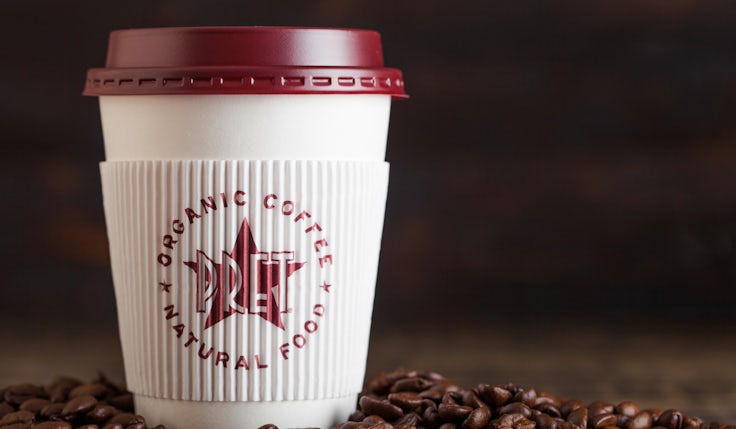Inflation, imposter syndrome, brand infidelity: 5 interesting stats to start your week
Get up to speed on the most vital stats of the week with our handy roundup.
Grocery price inflation weighs on consumers
Grocery price inflation has dropped to its lowest level in over 12 months at 12.2% in August.
But despite this relatively good news, Kantar data demonstrates 95% of consumers are worried about the impact of rising prices in supermarkets. It’s a figure that’s matched only by consumers’ concerns about energy bills.
It explains why discounters like Aldi and Lidl are outperforming the rest of the industry, as just under a quarter of the UK population consider themselves to be struggling financially.
Aldi’s sales grew by 17.1% in August, while Lidl’s increased by 16%. Together they now capture 17.7% of the sector. As the discounters continue to attract more consumer spend, so too do own-label products as people look to manage their budgets.
Fraser McKevitt, head of retail and consumer insight at Kantar, says: “One of the big stories of recent times has been the boost in own-label sales which dominate Aldi and Lidl’s shelves. Sales grew again by 9.9% in the latest month and supermarket lines now make up over half of everything we buy, up from 48% in August 2013. This is equivalent to a £3bn shift in sales away from brands.”
Source: Kantar
Consumer infidelity is on the rise
 Consumers’ lack of loyalty to brands is backed by separate research from the Data & Marketing Association (DMA), which finds discounts and promotions are an increasingly important driver of consumer demand. More than half (51%) of UK adults are using offers to trial new brands and products (up from 44% last year).
Consumers’ lack of loyalty to brands is backed by separate research from the Data & Marketing Association (DMA), which finds discounts and promotions are an increasingly important driver of consumer demand. More than half (51%) of UK adults are using offers to trial new brands and products (up from 44% last year).
That presents brands with an opportunity to get new consumers in through the door and at the top of the funnel. However, the data also finds 63% of consumers claim they often change their mind about what brands, shops and sites to use as a result of deals and offers – an all-time high since the DMA’s research began.
Brand loyalty has always been highly conditional, but now it appears brands will have to fight harder – and discount more – to keep their consumers coming back.
Source: DMA
Majority of marketers suffer from imposter syndrome
 Imposter syndrome is practically endemic within the marketing industry. Research from online careers platform PushFar finds four out of five marketers have experienced imposter syndrome while working in the industry – meaning more than 80% of marketers are unnecessarily afraid of being ‘found out’ as not good enough.
Imposter syndrome is practically endemic within the marketing industry. Research from online careers platform PushFar finds four out of five marketers have experienced imposter syndrome while working in the industry – meaning more than 80% of marketers are unnecessarily afraid of being ‘found out’ as not good enough.
Nearly two-thirds of those who suffer from the issue find it is triggered by being promoted into a new role. The second most common cause for people is having to step outside of their comfort zone for an activity like public speaking.
Around 40% also state applying for a new job is a key trigger, potentially limiting their path through the industry.
Source: PushFar
Digital wallet use set to surge in the UK
 Digital wallet purchases are set to surpass card transactions within 10 years, according to data from FreedomPay and Retail Economics.
Digital wallet purchases are set to surpass card transactions within 10 years, according to data from FreedomPay and Retail Economics.
The research claims the amount of overall spend made through digital wallets – of which PayPal is the most popular – is set to increase from £72.5bn to £127.7bn by 2028. Crucially, for brands looking to cater to their consumers’ expectations, digital wallets currently account for around 17% of retail, leisure and hospitality spend, compared to 18.8% made by cash.
It also claims that in the next five years, the value of digital wallet use is set to surge by 76.3%, ahead of other payment methods including transactions through loyalty points and buy now, pay later (BNPL) services.
Source: FreedomPay/Retail Economics
Programmatic continues to be a priority for DOOH
 Across the campaigns that UK advertisers have worked on over the past 18 months, nearly one-third (31%) included programmatic digital out of home (prDOOH).
Across the campaigns that UK advertisers have worked on over the past 18 months, nearly one-third (31%) included programmatic digital out of home (prDOOH).
Respondents to a survey by DOOH supply-side platform VIOOH say they plan to increase spend on the medium by almost a third again over the next 18 months.
In order to do so, one-third of advertisers (33%) are moving budget from other digital channels. Meanwhile, 24% are moving budget from other traditional channels, and more than one in 10 (15%) are creating new budgets to grow prDOOH.
VIOOH attributes this overall rise to “awareness of the distinctive advantages including hyper-targeting (64%), increased brand awareness (64%), high quality viewability (59%), and generating ROI (57%)”.
Source: VIOOH









Comments